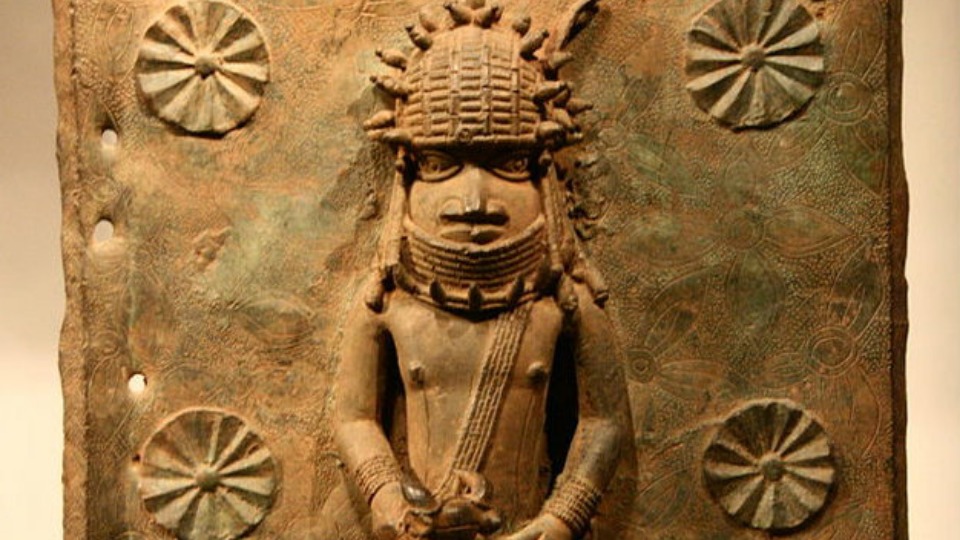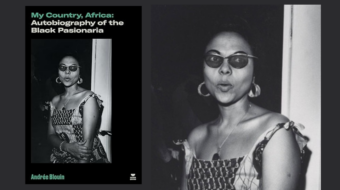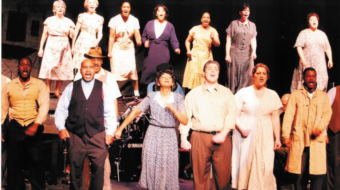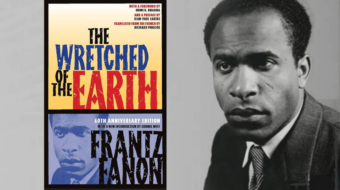
The role of museums in Western culture has been a conversation in art and academia for decades. The institution as a whole has had a spotlight shined on its structural biases for years. In response, several museums have attempted to institute reforms to expand diversity. Curator Dan Hicks, of the Pitt-Rivers Museum of Oxford University, Curator of World Archaeology and Professor of Contemporary Archaeology, examines the history of museums, yanking the lid off them to show the often violent foundation that undergirds the entire institution. His new book is The Brutish Museum: The Benin Bronzes, Colonial Violence, and Cultural Restitution.
A majority of history and cultural museums have large collections acquired by often questionable ethical means, and many cultures have asked that these items be returned in a process called repatriation. The debate around repatriation has existed for years—for example, with the Elgin marbles taken from the Parthenon in Greece which are now in the possession of the British Museum.

Hicks examines this paternalistic approach to artifact curation, focusing especially on a group of bronzes from the Kingdom of Benin (from what is now Nigeria) in the collection of the British Museum.
The Benin bronzes are a series of cast bronze (actually brass) bas-relief plates, many over a foot tall, that were used in altars and temples in sacred royal structures for the kings of Benin. On the death of a Benin monarch, the royal structure would be sealed up, with its own bronzes, and a new structure built for the new ruler. The bronzes contained history, stories, relationships, myths, and the lineages of royalty.
The bronzes are striking for their detail and naturalistic depictions of humans and other creatures, and they fascinated British Victorians.
The British Museum today has 900 of these Benin bronzes, sacred objects taken from a conquered country. Their path to the museum is often obfuscated as being part of traditional acquisition processes, their histories fogged with neutral-sounding or flattening language concealing the violence that put them there.
The British Museum uses would-be neutral terms like “contested objects” in its curation of these bronzes, for example.
Hicks argues that not only do museums need to make serious efforts to return artifacts like the bronzes but also that a deeper conversation needs to happen about how these “contested” items “arrived” in the museums in the first place.
In the British quest for imperial expansion, violent military power was brought to bear in several nations in Africa, in a series of undeclared invasions (mostly pre-1899) which Hicks characterizes as part of what he calls World War Zero. He further theorizes that these assaults in Africa by Western powers were a proxy imperialist war that predated the more obvious conflict among the “great powers” in World War I.
In an especially cruel twist of reasoning, these assaults on Benin and other nations were often carried out amidst claims that they were attempting to “fight slavery” in African cultures by using enlightened British military might to oppose it. Hicks demonstrates that while slavery existed in African cultures like Benin, the asymmetrical warfare on the part of the British response was so brutal and disproportionate, as to be deemed a democide, an outright killing and erasure of the peoples under assault.
It is in the wake of such violence that cultural items, like the Benin Bronzes, “come into British possession.” The chain of provenance, usually deemed sacred to the study of cultural items, is often not even an afterthought in the preservation of such items. Looted items were simply ripped from their original displays and piled up together in trophy photos before being carried away to Britain. Such trophy photos are often the only form of documentation of the origins of an item, before being transformed by imperialist alchemy into a “cultural artifact” and nestled into a museum collection.
Meanwhile, British military culture at the time had a lingering tradition of looting as an accepted and expected form of partial salary for military services, and it was no different in the operations of conquest in Benin.
So while many pieces were seized outright by government agencies, in many other instances pieces were sold on the open market by soldiers or other military officials, sometimes during their lifetime as a way to pad retirement or in other cases as parts of estate sales when soldiers died and their families cleaned out their possessions.
When the issue of repatriation comes up, however, the response of these institutions has generally been to assert that they are better equipped to care for priceless artifacts, the implicit assumption being that the origin countries of these artifacts are too poor and ignorant to safely curate their own material culture.
While some artifacts have been repatriated, and surface-level reform efforts are often made by museums to “diversify” or be “culturally sensitive,” these gestures serve more to assuage any sense of obligation to give back the remaining items.
Additionally, museums in Britain often hedge that artifacts in British possession have acquired another layer of history from their sojourn in British hands and that returning them will alter or destroy that segment of their history. Hicks argues that this transparent historical patina is merely the whitewash of a history of outright theft and violence; that British museums essentially acquired these items by buying fenced stolen goods.
Hicks, in an effort to illustrate these whitewash efforts, points to several examples in museums across the world where artifacts are often stored in a non-archival manner, even to the point of being found in the actual shoe or cigar boxes where they were stowed by previous owners.
It should also be noted that it was only a year or two after the sack and defeat of Benin that such overpowered industrial assaults on virtually undefended peoples, and the stealing of their sacred artifacts, were codified as crimes against humanity in the writing of the Geneva Convention.
Meanwhile, the seizure of artifacts like the bronzes by British cultural institutions serves several purposes. Their original accumulation had real monetary capital value and also served to raise the profile of museums, tourist attractions, etc. Likewise, the sales of looted objects, in addition to enriching those who originally looted and sold them, in many cases formed the basis of private museums that still exist today in Britain, as well as swelling the collections of public museums.
The widespread looting and retention of sacred cultural objects by British institutions also served to bolster the aims of imperialism and white supremacy. The display of these objects as literal trophies of conquest has had the reassuring result of soothing any lingering qualms of conscience about the British presence in Africa. Cushioning the display of such items under the laurels of science and discovery creates the impression that they were artifacts of a past and dying culture, that the Industrial Age’s “advanced cultures” were the only ones who could give such items the attention and study they deserved.
The dichotomy of “primitive vs. advanced culture” in fields like history and archeology also began to take on a more pointed quality in this era, with displays of “primitive cultures” posed against items from “advanced cultures” in museums serving to underscore the narrative that it was the responsibility of industrial white nations to give “dead” cultures their proper place in history while concealing that it was the violence of the white nations that had facilitated their demise.
The language around this sort of thing has softened with time, the loud parts getting somewhat quieter, but not by much. Museums today continue to operate with a sense of determinism—performing as if the objects arrived in their collections by a form of historical magic, and that to give them back would be to abandon some manufactured responsibility. Hicks contends that their real responsibility is to own up to the fact that museums are graveyards filled with stolen objects, and that these should be swiftly returned, in the same way that looted human bodies are sometimes returned to their culture of origin today.
Dan Hicks
The Brutish Museums: The Benin Bronzes, Colonial Violence and Cultural Restitution
London: Pluto Press, 2020
336 pp., illustrated, $27
ISBN: 9780745341767










